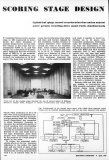
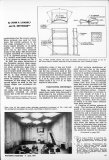
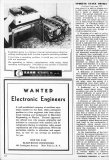
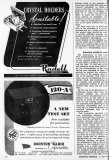
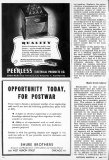
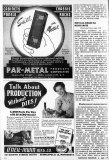
Cylindrical splays control reverberation time and an unusual mixer permits recording three sound tracks simultaneously
Columbia Pictures built a scoring stage in 1935 engineered to incorporate the latest principles of acoustic design known at that time. The volume of this stage was approximately 75,000 cu, ft, and was enough for a maximum of 25 musicians, employing the rule-of-thumb figure of 3000 cu, ft, per musician. Although highly satisfactory, particularly for orchestras of 15 to 20 pieces, this stage later proved inad-crease the reverberation time which had been still further reduced by this treatment, wooden columns of various diameters were stationed around the walls of the orchestra shell. These columns ranged from 2 ft, to 3 ft, in diameter and from 10 to 20 ft, in height and were placed at a distance of from 3 to 5 feet from the walls of the stage.
This treatment improved the acoustics of the studio considerably equate when orchestras of 35 to 50 men were to be accommodated. Until space could be found to construct a larger scoring stage, the Columbia Sound Department was compelled to adopt temporary measures to minimize the undesirable quality of sound resulting from overcrowding the stage and to seek means for increasing its reverberation time, particularly in the mid range and at the high frequencies, since these periods were considerably lowered by the presence of a large group of people in the room.
[…]